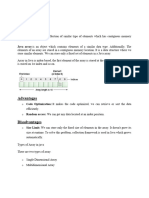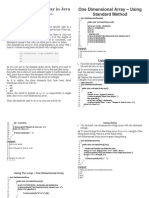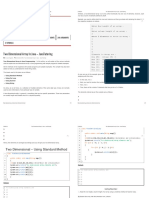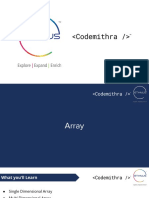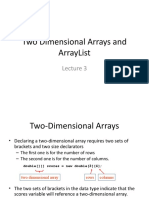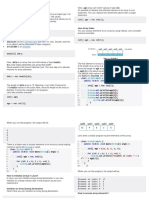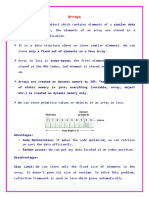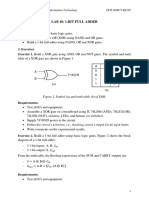0% found this document useful (0 votes)
35 views5 pagesJava
The document explains how to access and manipulate elements in two-dimensional and three-dimensional arrays using Java. It includes examples of creating arrays with user input and demonstrates the structure of 3D arrays. The document also provides sample code for initializing and printing the contents of these arrays.
Uploaded by
mdhameed08Copyright
© © All Rights Reserved
We take content rights seriously. If you suspect this is your content, claim it here.
Available Formats
Download as DOCX, PDF, TXT or read online on Scribd
0% found this document useful (0 votes)
35 views5 pagesJava
The document explains how to access and manipulate elements in two-dimensional and three-dimensional arrays using Java. It includes examples of creating arrays with user input and demonstrates the structure of 3D arrays. The document also provides sample code for initializing and printing the contents of these arrays.
Uploaded by
mdhameed08Copyright
© © All Rights Reserved
We take content rights seriously. If you suspect this is your content, claim it here.
Available Formats
Download as DOCX, PDF, TXT or read online on Scribd
/ 5




